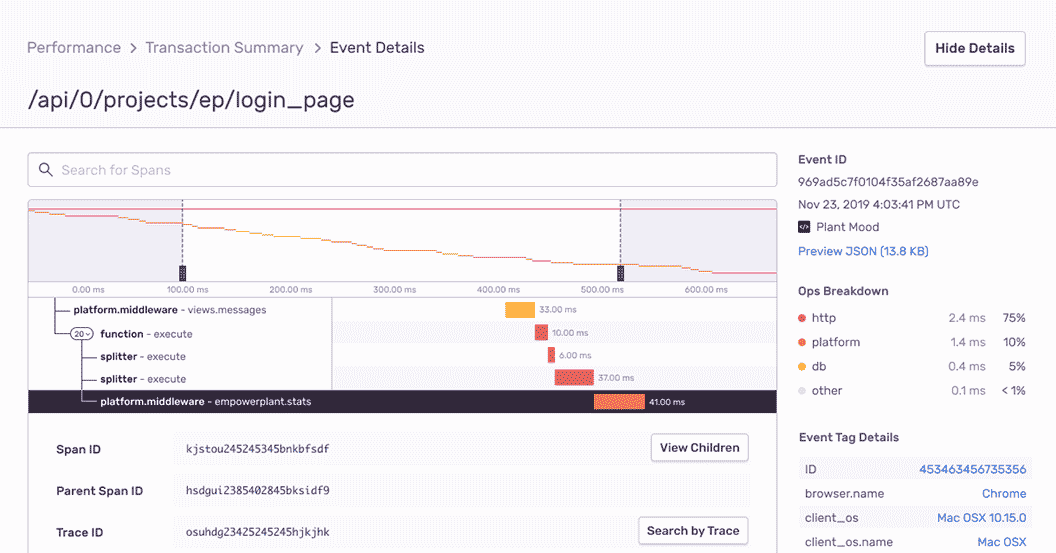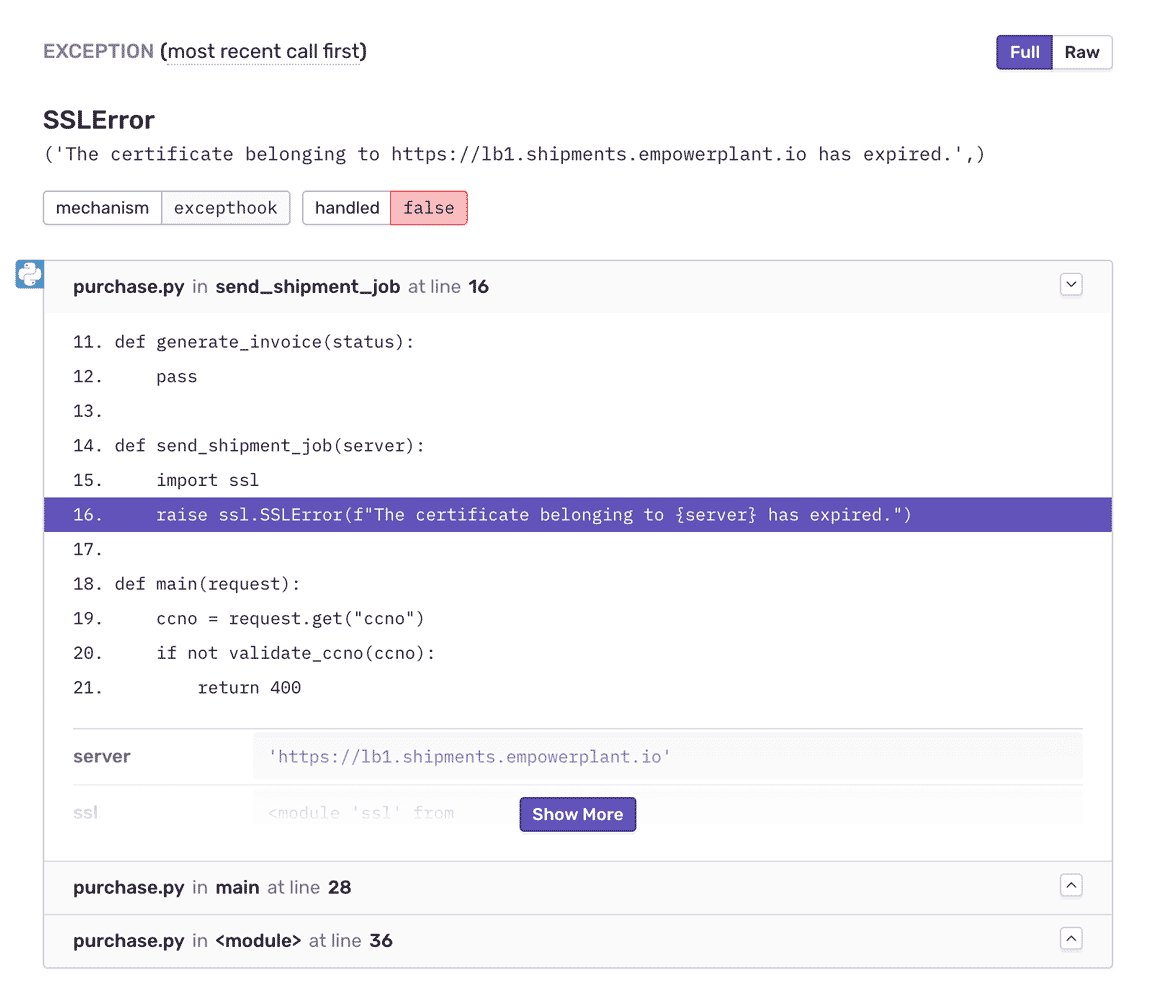
Django Error Monitoring
Actionable insights to resolve Django performance bottlenecks and errors. Improve your monitoring workflow with a full view of releases so you can mark Django errors as resolved and prioritize live issues.
Getting Started is Simple
Install our Python SDK using pip:
pip install --upgrade sentry-sdk
Initialize the Python SDK with the Django integration in your settings.py file.
import sentry_sdk from sentry_sdk.integrations.django import DjangoIntegration sentry_sdk.init( dsn="https://<key>@sentry.io/<project>", integrations=[DjangoIntegration()], # Set traces_sample_rate to 1.0 to capture 100% # of transactions for Tracing. # We recommend adjusting this value in production, traces_sample_rate=1.0, # If you wish to associate users to errors (assuming you are using # django.contrib.auth) you may enable sending PII data. send_default_pii=True )
Check our documentation for the latest instructions.
See all platformsMore than 150K Organizations Trust Sentry with Their Application Monitoring

Django Performance Monitoring
Within minutes after installing Sentry, software teams are able to trace Django performance issues back to a poor performing API call as well as surface all related code errors. Engineering Managers and Developers now have a single tool to optimize performance of their code and deliver fast customer experiences with Performance Monitoring.

Django Error Monitoring with Complete Stack Traces
See local variables in the stack for prod errors, just like in your dev environment. Introspect more deeply into the runtime and jump into the frame to get additional data for any local variable. Filter and group Django exceptions intuitively to eliminate noise.

Fill In the Blanks About Django Errors
Expose the important events that led to each Django exception: SQL queries, debug logs, network requests, past errors. Learn in which version a bug first appeared, merge duplicates, and know if things regress in a future release.
Sentry helps our team fix the most important issues in each release.”
See the Full Picture of Any Django Exception
Aggregate errors by details like HTTP request, hostname, and app version to see what’s new, a priority, or a trend.
Assign custom tags to reproduce the error environment specific to your application, business, and users.
Find answers to key questions: How actionable is this error? In which app release did the Django bug occur?